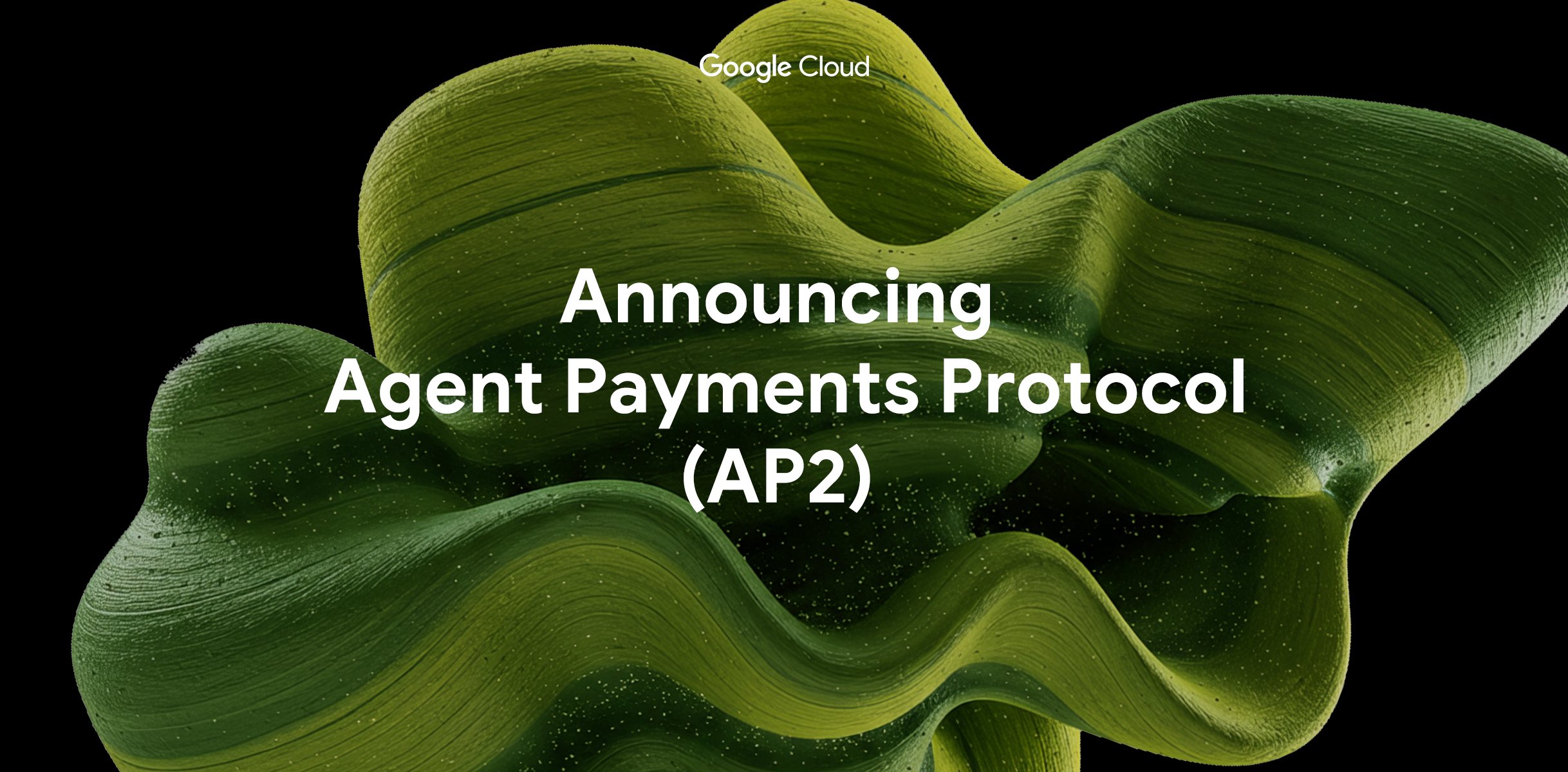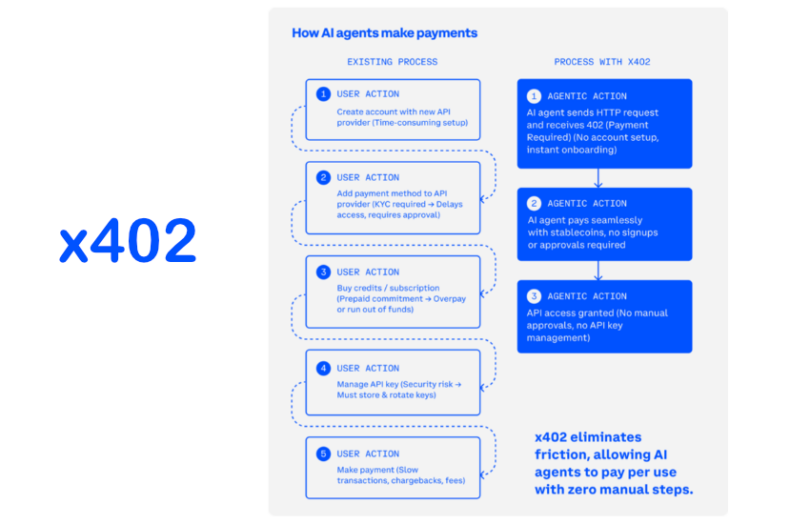X-trader NEWS
Open your markets potential
The final battle of AI payment: the three-body game between Google, Coinbase and Stripe

# As the Global Tech World Fixates on LLM Parameter Races, a Profound Shift in Future Economic Dynamics Unfolds Quietly
Written by: Luke
Source: Mars Finance
While the global tech community remains focused on the parameter race in large language models (LLMs), a far more profound transformation—one that will shape the future of economic lifelines—has been quietly unfolding beneath the surface. This is not about how beautifully AI can write poems, but about how these emerging "digital species" will independently participate in economic activities. Recently, Google, in collaboration with over 60 institutions, released the open-source Agent Payments Protocol (AP2). Almost simultaneously, payment giant Stripe, partnering with OpenAI and others, announced plans to build its own payment-focused Layer 1 (L1) blockchain, "Tempo." These technological launches together usher in a new era: the race to build financial infrastructure for the upcoming "Agent Economy" has begun.
This is no mere technological upgrade, but a paradigmatic revolution. As AI evolves from a "conversationalist" to an "executor" capable of independent decision-making and transactions, traditional payment systems—designed for humans—are facing reconstruction. This article delves into the three distinct visions of the future represented by the three core players in this transformation: Google, Coinbase, and Stripe. Not only do they pursue divergent technical paths, but they also offer their own answers at a philosophical level to the fundamental question of "who defines how machines transact."
## Google’s Top-Down Design: Using AP2 to Establish Order in the AI World
To understand AP2 (Agent Payments Protocol), we must place it within Google’s broader matrix of agent protocols. Earlier, Google released the MCP Protocol—analogous to AI’s "five senses"—enabling AI to perceive and connect to external tools and data. This was followed by the A2A Protocol, which acts as AI’s "language," allowing multiple AIs to collaborate. However, an AI team capable of perception and communication cannot achieve true autonomy if it gets stuck at the final payment stage. AP2 fills this crucial last gap: it provides the ability for value exchange, solving the "last-mile" problem of AI’s automated execution.

AP2’s core goal is to make AI agents "trustworthy, controllable, and traceable" within the existing financial world. When a transaction is initiated by an autonomously operating AI, merchants, banks, and regulators are immediately confronted with three classic questions: Is this authorized by the user? Has it misinterpreted the user’s intent? Who is liable if something goes wrong?
The ingenuity of AP2 lies in its refusal to disrupt Visa or Mastercard. Instead, it builds a universal "trust semantic layer" on top of them. It introduces an authorization mechanism based on Verifiable Credentials—colloquially understood as issuing AI with a "digital passport" and encrypted, notarized "power of attorney" documents. This mechanism operates in two modes:
1. **Real-Time Authorization**: When an AI identifies a specific product, it generates a "Cart Mandate" containing precise details. The transaction can only be executed after the user provides immediate encrypted signature confirmation.
2. **Delegated Authorization**: Users can preset an "Intent Mandate" with complex rules such as budget limits and time windows—for example, "When a limited-edition pair of sneakers goes on sale, automatically purchase it for me if the price is below $200." The AI independently monitors and executes the transaction based on this preset "power of attorney."
Together, these two mandates form an immutable chain of evidence. For downstream payment networks, every payment request from an AI is no longer from an "opaque robot," but from verifiable user authorization. Google’s strategic intent here is clear: by allying with traditional financial giants like American Express, Mastercard, and PayPal, as well as crypto leaders like Coinbase and the Ethereum Foundation, it aims to become the "standard-setter" for the new order. It does not create currency or handle clearing; instead, it defines "trust" itself, seeking to position itself at the core of the future Agent Economy.
## Coinbase’s Crypto-Native Approach: x402 Makes API Calls Equivalent to Payments
If Google aims to "invite" AI into the real-world financial system, Coinbase aspires to build an entirely new, crypto-native economic environment for AI. The x402 Protocol it promotes is a highly forward-thinking attempt, named after an HTTP status code that has rarely been used on a large scale in internet history: "402 Payment Required."

The concept behind x402 is simple yet powerful: to make payments an inherent part of internet communication. When an AI agent calls an API service (e.g., obtaining a data report or rendering an image), the server can directly respond with a "402 Bill." Instead of redirecting to a complex payment gateway, the AI agent can immediately complete a micro-payment using stablecoins like USDC on-chain and gain access to the service right after payment.
This mechanism outlines a clear blueprint for instant, automated, high-frequency transactions between machines. Leveraging the global instant settlement and low-cost features of stablecoins, AI services can be broken down into extremely granular "atomic units," with pricing based on the number of requests, usage duration, or even computing resource consumption. This is a realm beyond the reach of human payment processes.
More importantly, in its AP2 launch, Google explicitly announced a partnership with Coinbase to release the "A2A x402 Extension," describing it as a "production-grade solution for agent crypto payments." This official endorsement carries significant weight: it confirms that x402 is not merely an "isolated experiment" within the crypto community, but a "crypto track" recognized and integrated into the broader ecosystem of mainstream tech giants. Two seemingly parallel paths have now achieved a historic convergence.
## Stripe’s Independent Path: Controlling the Future of Payments with the Tempo Blockchain
While Google and Coinbase enter the fray from the "standard" and "native" dimensions respectively, payment giant Stripe offers a third answer: vertical integration. Stripe is not content with building protocols on existing networks; instead, it has directly announced plans to create Tempo—a Layer-1 blockchain specifically designed for payments.
This is an extraordinarily ambitious plan. Stripe’s logic is that neither traditional payment networks nor existing public blockchains can meet the extreme performance, predictable low costs, and strict compliance required by the future AI economy. Rather than making incremental fixes on others’ "land," it aims to build an entirely new "financial continent" of its own.
Tempo is designed to be EVM-compatible but has been deeply optimized to provide a highly controllable environment for massive payment transactions. Stripe’s list of strategic partners—including OpenAI, Shopify, DoorDash, and Anthropic—reveals its goals. It seeks to directly integrate top AI model companies and leading commercial platforms into its blockchain, forming an ecosystem with high synergy from underlying technology to upper-layer applications. This stands in sharp contrast to Google’s open-platform strategy, resembling an "Apple-style" closed-ecosystem approach. By controlling the underlying blockchain, Stripe can not only define rules but also directly capture value, offering customers a seamless, efficient, yet relatively centralized solution.
## Opportunities at the Execution Layer: Giants Pave the Way—Who Will Build the "Vehicles"?
As the three giants lay down "highways" to the future, a massive market opportunity emerges: who will build the "mass-produced vehicles" that travel on these roads? Protocols and underlying blockchains cannot be directly used by consumers or enterprises. The market urgently needs an "execution layer" to transform these complex technologies into usable, secure, and easily integrable products.
This is where startups like Kite.AI are making their mark. PayPal Ventures recently led a $18 million funding round for Kite.AI, recognizing its potential as "agent infrastructure." Kite.AI’s concepts of "Agent Passport" and "Agent App Store" address key pain points: the former provides AI agents with verifiable on-chain identities, while the latter offers a marketplace for discovering, evaluating, and paying for various services. These perfectly illustrate the core functions of the execution layer: identity, discovery, payment, and risk control.
Beyond Kite.AI, companies like Skyfire and Crossmint have also emerged, attempting to package abstract standards like AP2 and x402 into SDKs and APIs that developers can easily integrate. These companies do not compete directly with giants; instead, they act as "gap-fillers" in the ecosystem, translating the potential of protocols into real commercial value.
## Conclusion: Two Paradigms, One Future
The battle for AI payments has begun, and its impact extends far beyond defining technical standards. The competition and integration of three forces—Google’s "order," Coinbase’s "nativeness," and Stripe’s "integration"—will fundamentally reshape the form of digital commerce. AI agents acquiring payment capabilities mark their "coming-of-age ceremony"—evolving from intelligent "information processors" to true "economic participants."
Notably, there is a paradigmatic difference between the extension of traditional authorization frameworks represented by Google and the purely native "decentralized custody + on-chain verification" solution pursued by Web3 AI. The former focuses more on automated execution, while the latter aspires to AI’s independent management of digital assets. However, the two are more likely complementary than competitive. As users grow accustomed to the convenience of AI payments in traditional fields, their acceptance of AI’s independent management of on-chain assets will naturally increase. Scenarios that AP2 cannot address—such as anonymous transactions and censorship-resistant payments—leave ample room for crypto-native solutions.
One thing is certain: the game has changed. When AI can not only understand your intent but also deploy funds to realize it, a new economic era—with machines as core nodes—will truly begin. Ultimately, who gains the upper hand in this race will depend on who best balances the eternal tensions between innovation, trust, and efficiency.
## Disclaimer
The views expressed in this article are solely those of the author and do not constitute investment advice for this platform. This platform makes no guarantees regarding the accuracy, completeness, originality, or timeliness of the information contained in this article, nor shall it be liable for any losses arising from the use of or reliance on such information.
Contact: Sarah
Phone: +1 6269975768
Tel: +1 6269975768
Email: xttrader777@gmail.com
Add: Lee Garden One, 33 Hysan Avenue, Causeway Bay, Hong Kong.